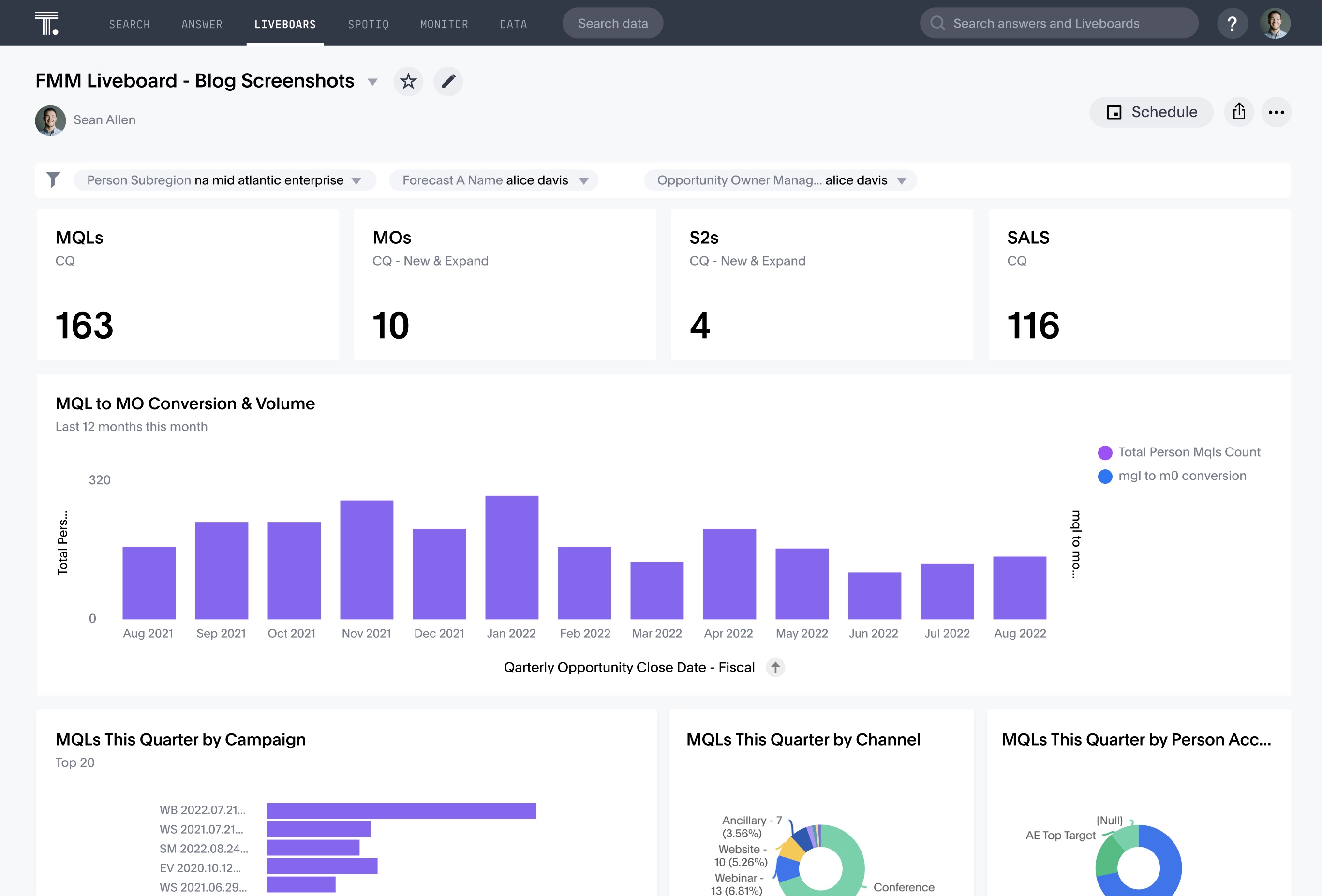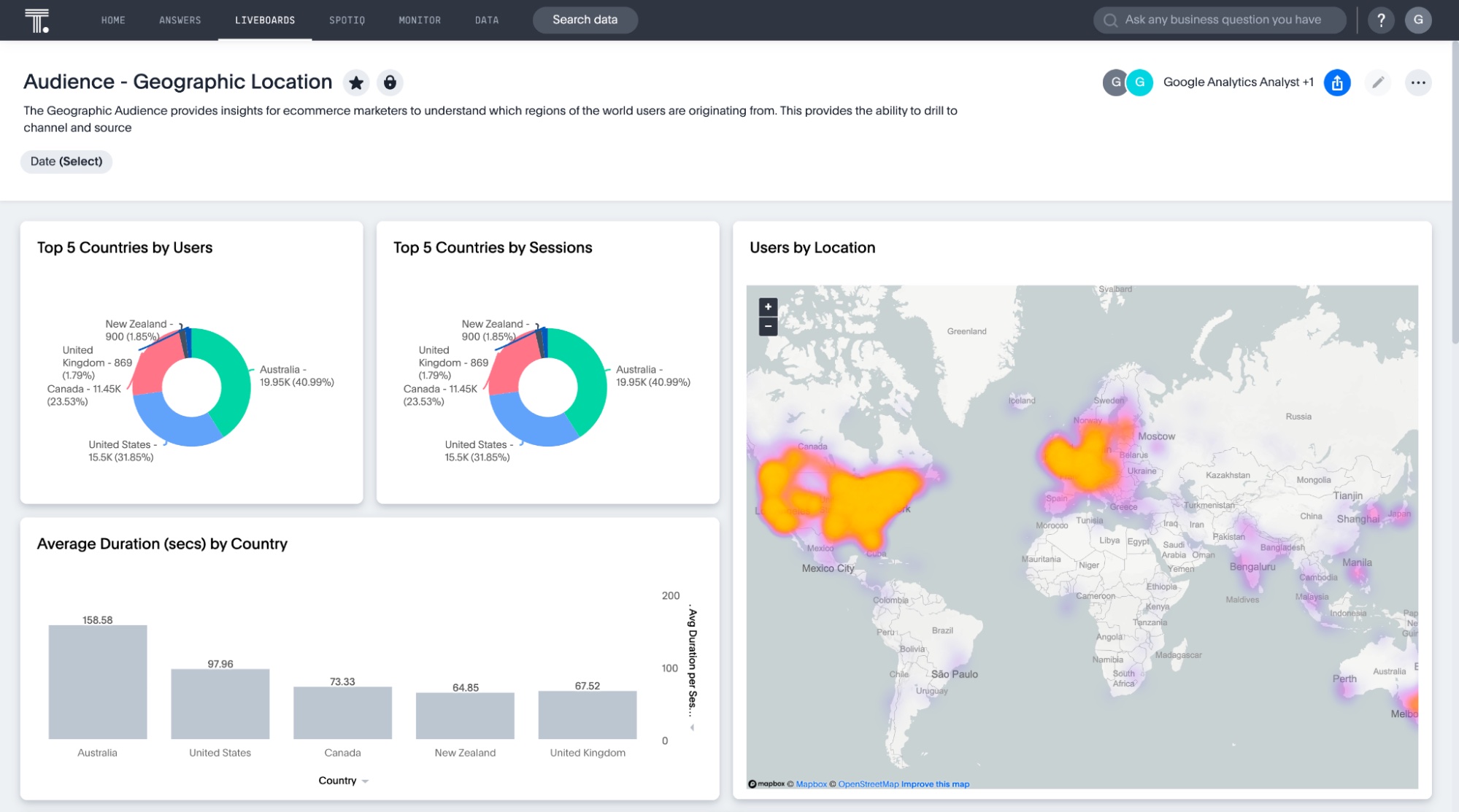In a recent Gartner survey, a majority of CMOs say measuring their impact and proving marketing’s value to their organizations is a top priority. However, converting thousands of data points into coherent, actionable insights is no small task.
CMO dashboards can provide a solid overview of your marketing activities, campaigns, and top channels. This information empowers you to tell compelling data stories and make informed strategic decisions.
Sounds beneficial, right? Unfortunately, not all CMO dashboards are created equally. Below, we’ll cover the features you need with visual examples so you can develop a dashboard that fulfills your demands.
Table of contents:
A CMO dashboard is a centralized, visual interface that offers CMOs and executives a snapshot of their company’s overall marketing performance. These executive dashboards usually collect various pieces of marketing information in a business intelligence platform to help you track and analyze critical key performance indicators (KPIs) and metrics. Doing so allows you to make data-driven decisions regarding resource allocation, consumer behavior, and strategies that return on investment.
1. Enhanced communication
Finding insights is just the first step in building a strong marketing narrative. To tell a great data story that conveys complex data concepts to stakeholders, you’ll need contextual summaries and data visualizations. Perhaps there is a higher correlation of prospect-to-customer conversions if a user receives a specific discount code. Or, maybe you notice that a specific digital ad is underperforming, and this anomaly is skewing your paid advertising ROI. CMO dashboards help you visualize trends in data, so you can showcase your findings and obtain executive buy-in.
Moreover, with modern dashboard solutions like ThoughtSpot, you can create interactive CMO dashboards—or as we call them, Liveboards—to add context to your visualizations. These Liveboards allow you to leverage collaborative features such as Notes to incorporate additional information, offering stakeholders a broader narrative.
2. Alignment with business strategy
When you’re making strategic marketing decisions, you’ll need to be able to zoom out and get the big picture. With a CMO dashboard, you can gather data from all marketing channels and consolidate it into one platform, empowering you to identify performance gaps and spot areas for cost reduction. This high-level vantage makes it easier to course-correct your strategy and align with target business outcomes.
Other times, you need to drill into the data to figure out the culprit of a missed projection or overperformance. Using AI-powered features like ThoughtSpot’s SpotIQ, you can perform a one-click analysis to uncover driving factors and anomalies behind key metrics and visualizations. Armed with this information, you can make data-driven decisions about campaign optimization and resource allocation, and ensure those insights are communicated to all relevant team members.
3. Better resource allocation
According to a Gartner survey, 75% of CMOs face increased pressure to “do more with less.” This indicates that CMOs must prioritize productivity, recalibrate spending, and make smarter investments. With CMO dashboards, you gain visibility into all of your marketing initiatives so you can optimize the return on your marketing spend.
This is the case for Austin Capital Bank. With ThoughtSpot’s Liveboards, marketing executives have real-time insights into paid search, hourly conversions, spend perspective, business reviews, and more. This access has helped the company reduce its paid search spend by 50% and improve the bank's revenue margin by roughly 30%.
Even better, ThoughtSpot also offers real-time KPI monitoring through ThoughtSpot Monitor, which allows marketing executives to set a threshold so they can monitor important KPIs and metrics on the go.
Because every marketing strategy is unique, you need a dashboard that can flex to fit your ever-evolving needs. Customize your dashboard with relevant KPIs that align with your business goals.
Below, we’ve listed some examples for inspiration:
1. Executive summary dashboard
Executive dashboards are for marketing leaders who want a high-level overview of their marketing initiatives. They might focus on key performance metrics such as total revenue, cost per acquisition (CPA), customer lifecycle value (CLV), and lead generation costs.
Take a look at this CMO dashboard example. Analyzing how many MQLs are converted into SQLs can help you understand how different campaigns resonate with your customers, allowing you to develop effective marketing strategies.

2. Executive web analytics dashboard
Business dashboards offer stakeholders a comprehensive view of their website performance. You can monitor website metrics, such as total organic search traffic, paid search traffic, bounce rates, and user demographics. This dashboard is designed to give you more visibility into how prospects and current customers interact with your website.
For instance, a CMO of an e-commerce company could use an executive web analytics dashboard to gain valuable insights into customer demographics. By analyzing data such as browsing history, total sessions, and average duration, you can gain a deeper understanding of your target audience, helping you tailor your marketing efforts and product offerings accordingly.

3. Executive digital marketing dashboard
Executive digital marketing dashboards provide insights into the performance of various digital marketing channels and campaigns. By tracking and analyzing data from websites, social media, email, or advertising, you can assess the effectiveness of marketing efforts and optimize performance.
For example, you could use an executive digital marketing dashboard to evaluate Google ad campaign performance and make informed decisions about messaging, targeting, and budgets.

4. Executive email dashboard
An executive email dashboard allows CMOs to track key metrics such as click-through rates by campaign, open rate, bounce rate, and list growth rate. Knowing these metrics empowers you to analyze the effectiveness of your email campaigns, allowing for personalized targeting and content optimization.
Take this email dashboard example. By visualizing crucial metrics, you can understand how prospects engage with your email campaigns. You can then apply these insights to ensure the right messages reach the right people at the right time.

Driving impact, optimizing spend, and aligning marketing strategy with business goals are key priorities for CMOs. However, fragmented insights can pull your focus in different directions.
With ThoughtSpot’s AI-Powered Analytics, you can revolutionize your approach to data analysis. Our intuitive search experience empowers you to ask complex business questions in natural language and receive AI-assisted answers and interactive visualizations in return. These real-time insights into KPIs allow you to respond promptly to market shifts, emerging trends, and operational changes.
Position your brand for success. Schedule a ThoughtSpot demo today.








